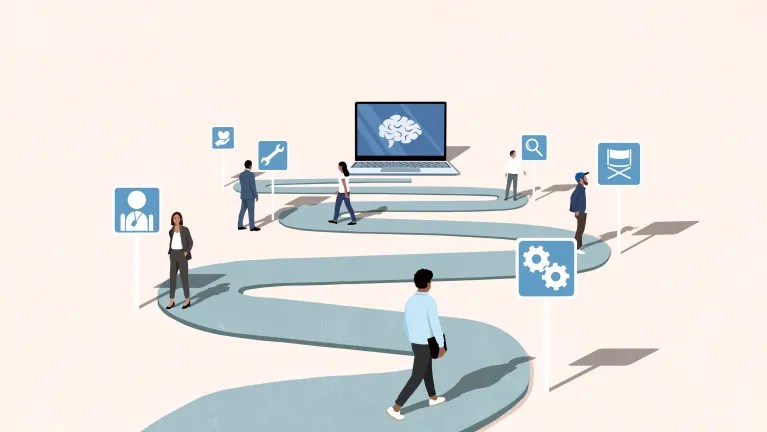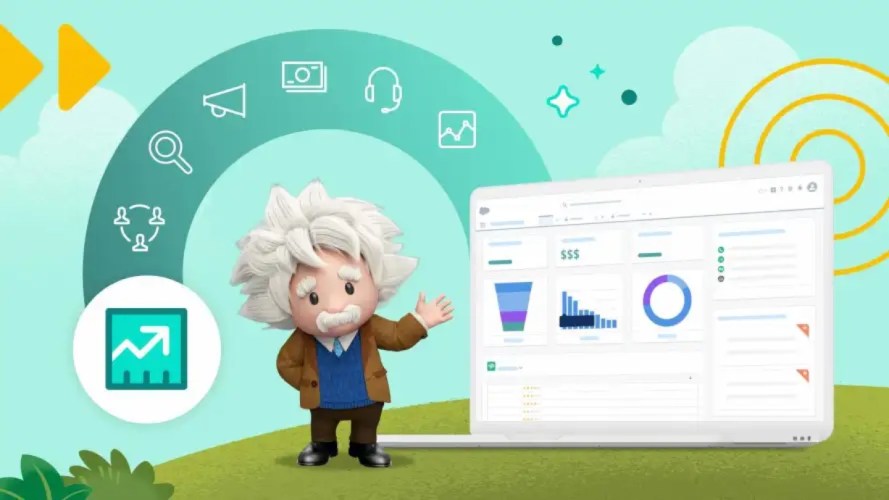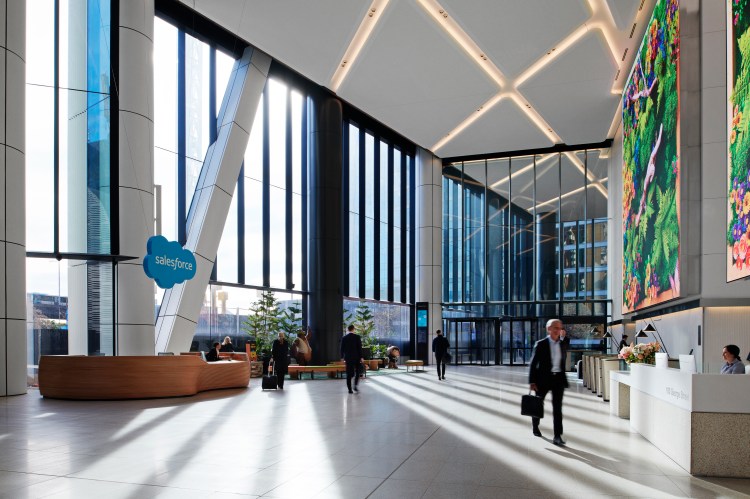New Research: 5 Things Australians Working From Home Need From Managers and Companies Now



Every fortnight, Salesforce Research surveys the general population to discover how we’re navigating the COVID-19 pandemic – both as consumers and as workers.

Derek Laney
We’re posting the insights we’ve found and tips on what businesses can do in response in a public, interactive Tableau dashboard so you can explore data across demographics, geographies and different time periods. Here, Derek Laney shares insights from the first two surveys – at the start of May and mid-month – on what Australian workers say they need from their managers and companies now.
If you, like me, feel like the COVID-19 pandemic has turned the very nature of work on its head, rest assured you are not alone. Sixty-eight percent of the Australian workforce was working remotely in our latest survey on 14-15 May – and 81% of those had started doing so since the onset of the COVID-19 pandemic. As leaders, we are all of a sudden asked to equip, empower, communicate with, motivate and care for geographically scattered employees who are, at the same time, dealing with an unprecedented crisis that impacts their personal lives. The actions we take now could have far-reaching implications.
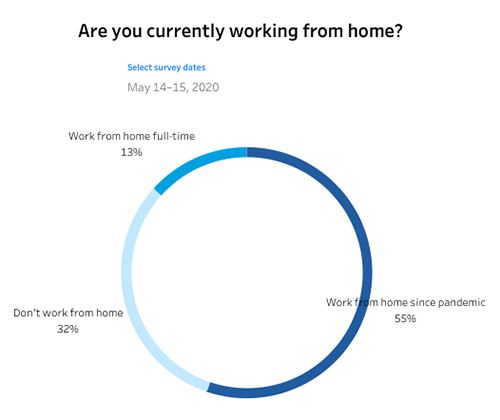
68% of Australian respondents are working from home. Explore the data.
To understand those implications more, we’re surveying a broad base each fortnight about their productivity, the resources they have, and the actions their employers can take to engage and care for them during this difficult time.Here are the key findings from the first two surveys.
1. Communication from managers and leadership
Regular communication is the basis of any successful remote work culture, and 92% of the Australians working remotely considered it important when we asked about this in the first wave of the research on 1-2 May. Yet making this a reality is easier said than done – it may surprise you to hear that only 71% of workers receive frequent and relevant communication from company leadership, and only 22% rate their communication from leadership as excellent. So there’s plenty of room for growth and improvement.
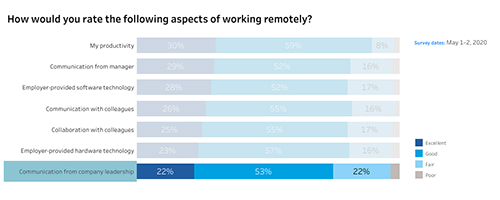
As leaders we have the opportunity to instill a sense of stability, care and common purpose through regular communication. Clear and timely updates on shifting goals, initiatives and progress are extraordinarily valuable, but so are less obvious topics such as reliable sources of information about the crisis, or even an open and frank discussion of personal vulnerability to remind employees that we’re all in this together.
Effective communication among work groups is just as critical for productivity and morale, but at the start of May just 26% and 29% of Australians rated their communication with colleagues and managers as excellent, respectively. As managers we can make a big difference by prioritising both regular check-ins and team get-togethers. The goal shouldn’t be to add meetings, but to establish a steady cadence of open and clear conversations, similar to what might happen in-person. Maybe it’s time to toss out that presentation deck and start asking questions.
Polling teams on the right cadence of meetings, the topics to cover and the right medium goes a long way towards instilling a great culture of communication regardless of where team members sit.
2. Hardware and software that increases productivity
Amazingly only a mere 15% of workers in Australia said in wave two of the research on 14-15 May that they were less productive than they were pre-pandemic – maybe it’s time for me to consider that beach house sea-change. Then again, in our first survey at the start of May, 20% said they were less productive but only 30% rated productivity as excellent, calling into question how effective ‘business as usual’ was in the first place. This doesn’t cast the status quo in a great light, and I see a huge opportunity to improve that status quo in our rapid shift in workplace settings.
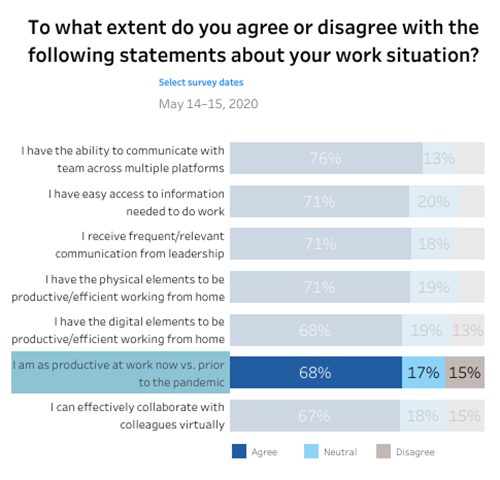
Perhaps it is not surprising, though no less disappointing, that only 23% say their employers have provided excellent hardware such as desks, peripherals and the like. While furnishing complete home offices isn’t likely to be in budget, employers can still show they care for worker wellbeing by proactively sharing tips on home office best practices.
Physical spaces are only part of the remote work equation, of course. Despite your grandma’s bingo club now using Zoom, a mere 28% of Australian remote workers say they have excellent software or apps from their companies. Several tech companies, including Salesforce, are offering product trials for free, providing companies with no-risk opportunities to try different solutions and identify what best meets their shifting needs.
Just 32% of Australian remote workers say they’ve tried new technologies or apps for the first time while working remotely, which makes me wonder how the rest of the 68% are getting by with tools built for a different age.
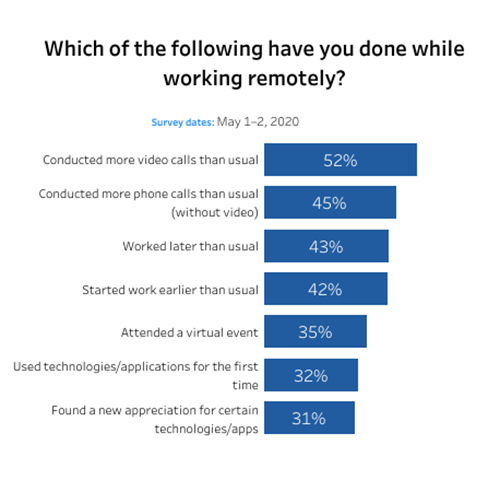
Working from home could be changing behaviours – it’s an opportunity to improve on ‘business as usual’, and there is room for experimentation. Explore the data.
3. Professional development to build skills for ‘the new normal’
Productivity isn’t the only objective for a remote workforce; development must also continue, and even increase to keep pace with change – 69% of Australians believe the pandemic will permanently change the nature of their work, and only 60% say their skillset is up to date.
Fifty-six per cent of Australians want a better or more up-to-date skill set, and half say their employers have provided the training to keep their know-how up-to-date. Maintaining a culture of learning among a distributed workforce is essential for both keeping employees on an upward trajectory as well as business competitiveness.
Encouraging employees to develop an individual development plan is a great start. Providing development resources like Trailhead is another way to help employees make sure their progress doesn’t stall.
The most important step a manager can take though – more important than specific tools or methodologies – is demonstrating interest in employees’ development by helping to define milestones, remove roadblocks and keep accountability.
4. Flexibility of hours and locations
Everyone is experiencing this crisis differently, and a one-size-fits all approach to employee engagement will be ineffective, at best. It’s critical that, as managers, we demonstrate an understanding of employees’ unique circumstances and provide the resources to produce our best work without neglecting family and personal needs.
What I am feeling seems to be almost universal – 89% of the Australian workforce cite flexibility in the location of work as important for employers to provide at this time, and 91% cite flexibility in schedule. Both are especially important for working parents and carers. Everyone’s circumstances are unique, but many of us have found ourselves and our partners acting as full-time care providers and educators while doing our regular jobs.
For me this has been a wonderful time reconnecting with my kids – it reminded me a lot of the closeness we had during my sabbatical. At the same time, I feel a mixture of regret and relief as my kids go back to school full-time this week.
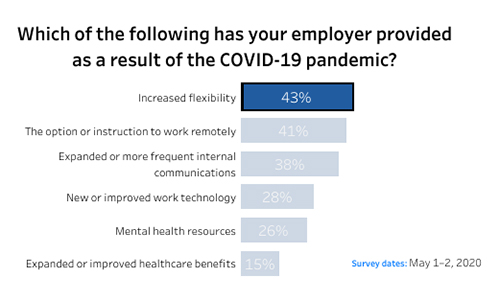
Just 43% of respondents to our first survey, however, said their employers offered increased flexibility – slightly above the global average of 41%. Leaders who proactively address the potential need for flexibility, and demonstrate a willingness to work with employees in updating schedules, workflows and the like to match new realities, will go a long way in earning long term loyalty and advocacy.
5. Resources to support mental health
Physical health is a primary topic of concern in our current environment, and for good reason. But as the strain of uncertainty, stress and isolation persist, mental health needs attention, too.
While the 80% of Australians citing concerns for physical health in our second survey sounds surprisingly low given we’re in a pandemic, the 68% expressing concern for their mental health is worryingly high. For comparison, only 61% expressed concern for their job security.
I’m not sure whether to be worried or hopeful that there is variation across generational lines – the 68% of Australians concerned about mental health rises to 81% among millennials and 80% among gen Z. Even if this is partly a result of stoicism among the older generation coupled with better mental health awareness and education among the younger, the younger generations also report greater isolation – 50% of gen Z, 48% of millennials and 50% of gen X describe feeling isolated at the moment, compared to just 35% of baby boomers.
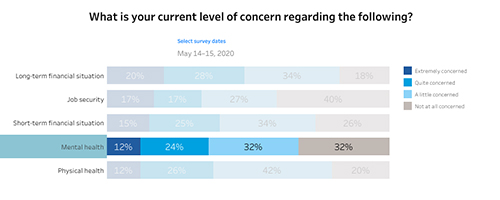
More people express concern for mental health than for job security. Explore the data.
The workforce is far from immune from this issue, especially at a time when 44% say they feel isolated (as at 14-15 May – a great improvement from 1-2 May when 54% said this) and 33% say they feel insecure. And while 26% of Australians report having received mental health resources from their employers as a result of the pandemic, that potentially represents a significant gap between need and access.
To address these concerns, employers should evaluate their wellbeing programs to meet the unique needs of the workforce during this time. At Salesforce, for example, we launched a live webinar series called B-Well Together, for employees, the community and experts to discuss wellbeing. We also introduced a global benefit program, called Thriving Mind, in partnership with Thrive Global and Stanford Medical, to help employees and their families strengthen their psychological and emotional health.
Other Australian businesses have introduced, increased or even just reiterated access to professional counselling and mental health support via employee assistance programs.
For more insights on employee experience during these challenging times, among other topics, check out our interactive research dashboard. For additional data-driven resources on leading through change, visit the Tableau COVID-19 Data Hub.
If you need help dealing with isolation or any other struggles at the moment, reach out to LifeLine here or on 13 11 14.
Methodology
Data mentioned in this article is from a double-blind survey of the general population, a subset of which consisted of full- and part-time employees in the United States, United Kingdom, France, Germany, Brazil and Australia. Data was collected from 1-2 May 2020 and yielded 3,542 responses. Data is weighted to accurately represent the general population.
Stabilise, reopen and continue to grow – download the COVID-19 Response Playbook.

